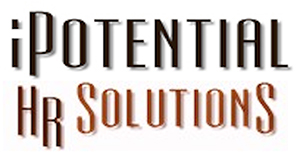Read original article here.
As companies enter a global marketplace, compete for customers and increasingly hustle to find skilled workers, there’s one lesson that can help them: Diversity is good for business.
A “diversity initiative” transcends “affirmative action” and such things as simply hiring and promoting minorities, women or people with disabilities. Companies that want to be first-rate, world-class operations can’t regard this as just another trendy issue or the theme of the year, one expert said Tuesday. Instead, it can become a integrated part of the entire corporate culture that can equip a company to do well now and in the future.
“We must be committed to sustainable change,” said Enrique Baltierra of the Professional Development Group. “The goal is not to make money. The goal is to create an environment where everyone does his or her best to contribute the best to the organization. What happens next? The company makes money.”
Baltierra was one of three panelists speaking before the Salt Lake Society for Human Resource Management, a 400-member organization that last year launched its own program to get Utah business leaders thinking about diversity plans and providing resources.
Baltierra told the group that creating a “diversity initiative” and helping it permeate the entire corporate culture offers many benefits for employers.
Among other things, it creates a world class business, helps find talented workers, helps find customers in a global marketplace, enhances productivity and creativity, is a powerful recruitment and retention tool and assists in dealing with legal issues.
Need other reasons to launch a plan?
Consider some significant numbers that affect hiring and marketing:
- Annual spending power for African-, Latin- and Asian-Americans is $650 billion.
- Older Americans spend more than $800 billion yearly.
- Nearly one in three U.S. residents is foreign born. About one in three of these is a naturalized citizen.
- Women’s share in the U.S. work force is 46 percent.
“Diversity is not a training program — it is a process,” he said. To get started, people in business must examine the purpose of their organization. Then, they can study trends in the marketplace, work force and world. After that, it’s time for action.
Another speaker, Richard Serrano, human resource manager with McLane Foods, which is the country’s biggest distribution firm, said corporate officials discuss the firm’s beliefs and values with new employees at orientation sessions. Then, any time someone gets a position of responsibility, that individual is given tests that indicate personality type, then spends a week in intense training at the McLane Training School.
The individuals learn to work as a team (different personality types are deliberately mixed together). Then after everyone gets comfortable, their groups are switched. Meanwhile, the teams are solving hypothetical business problems. “It’s amazing to see the different personalities interact,” Serrano said.
Another speaker, Lynn Lee, vice president and manager of the staffing and recruitment center for First Security, said those involved with her firm’s diversity initiative sat down one-on-one with various managers “to bring it home to them and make it personal to them” why diversity is important.
For more information on creating diversity in the workplace, call Madeline Rees, Romac International’s Source Services, 801-328-0011.
